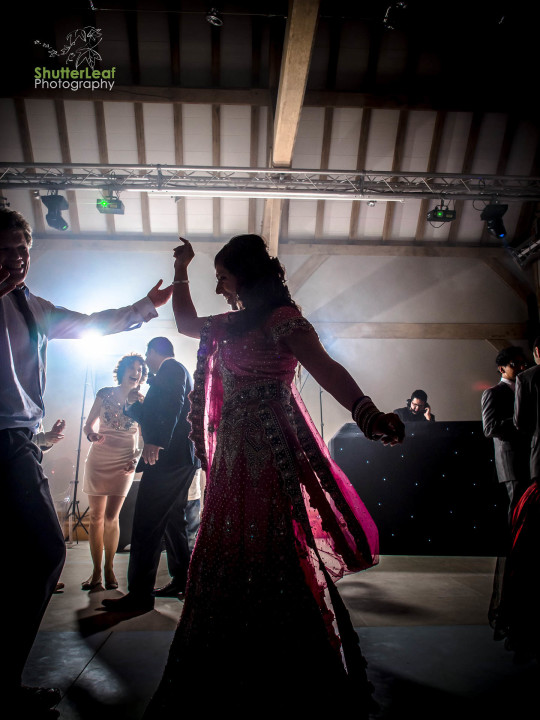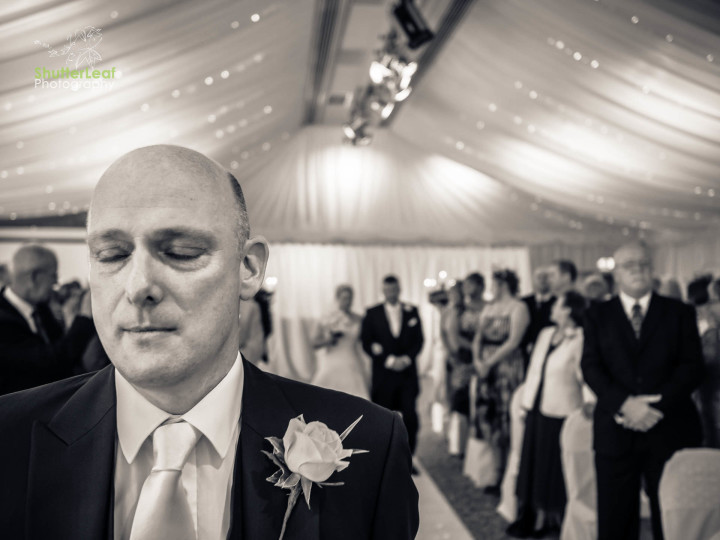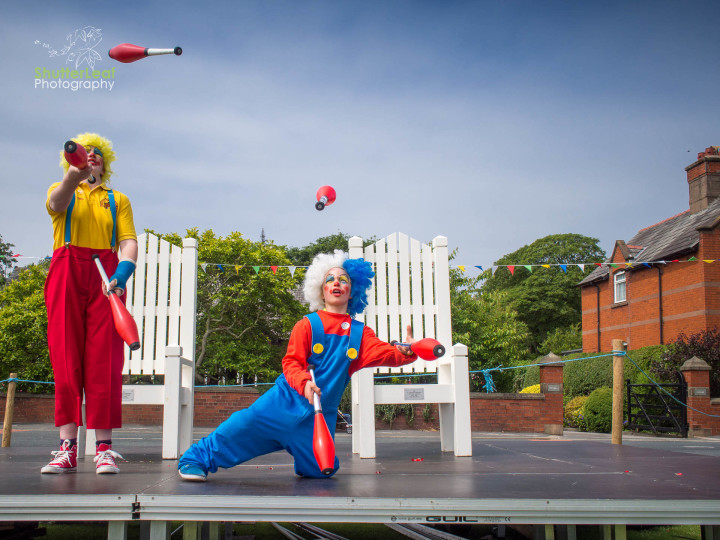Welcome to our series of 100 interviews we will be holding with professional photographers who use mirrorless cameras for work! “Switching to a smaller and lighter system” has become somewhat of a buzz phrase as of late, but many working photographers take this philosophy seriously. From medical reasons such as resolving back and shoulder pain to the simple realisation that bigger does not mean better, photographers are turning to mirrorless systems now more than ever before.
This week’s interview is with Anurag Sharma, a documentary wedding photographer from Lancashire, UK who uses not one, not two but three Olympus OM-D E-M5s with primes on the job. It is rare to find a professional photographer who uses one OM-D for work, let alone three, so when we first came across Anurag’s blog, we were immediately intrigued…
Visit Anurag’s Blog: ShutterLeaf Photography
Follow Anurag on Twitter
Who is ‘Anurag Sharma’ in three simple sentences?
I am a 43 year old, documentary led photographer, married & a father of two rather fabulous daughters.
The older I get, the simpler I want my life to be.
I would rather find out things for myself than wait for things to find me.
What system did you use before switching to the Olympus OM-D E-M5 and why did you decide to make the switch?
I didn’t sort of switch but more evolve into using the OMD EM5s.
My photographic life started off with the humble kit based Olympus E500. I’ve only ever shot, professionally, with Olympus DSLR cameras and therefore am very used to the cropped sensor (four thirds) that eventually evolved into the m43 sensors in the OMD cameras.
The only reason I chose Olympus was simply because it allowed me to be a wannabe professional without the price tag. Ha 🙂
The lenses though…..now that’s a different matter…..and with Olympus pushing the boundaries, for the digital age, ever since the E1 pro DSLR……I stuck with the system.
What made me switch was part intrigue and part experience.
I owned the EPL1, as a walk-around camera, and was bowled over by what it was capable of in such a small form factor. I used the camera, what essentially was a step up from a compact, on weddings and was finding that I was using it more and more on my shoots. I still had the DSLRs of course, as backup.
I’m glad I did it that way, allowing me to get used to the new system.
Most of the photographers I now look to are from a different century…..thinking is exactly the same now as it was back then…..I am, at heart, a photo journalist….and relating to these people is like coming home….what I was doing before I came across them….what I think when I document a wedding day….how I look for light and compose….all those actions I was taking was just reaffirmed by these other photographers…..it made me believe that the things one does….doesn’t matter if they don’t tally with modern thinking…..it’s fine to do….if it’s fine for you.
So, looking back, an EPL1 camera at a wedding…..at a shoot that someone pays me for…..a compact camera! That’s just crazy!
…and you know…I don’t care….what anyone thinks….it was the right thing…it was fun…enjoyable…..and the photographs showed it…..technically….there were issues….but once you remove the shackles of fear and go do it…..then amazing things happen….
….and it’s not like I simply stepped into a wedding day….I worked with it before hand….and it was scary…but I had the E5 and belief in myself as backup……
Going forward, around 10-12 months later, the EP3 was my next m43 camera and soon thereafter, I tried out the Olympus OMD EM5. It was the incredible leap in image quality that convinced me that this was it….to ditch the DSLR altogether.
Already familiar with m43 form factor and loving it, the OMD simply gave me the impetus to switch.
I started using OMD in conjunction with E5 and within a month, I made the decision to switch totally.
I could have made that answer shorter….haha…..
You say you use three E-M5s with primes. Why do you prefer prime lenses to zooms? Will the new PRO line make you reconsider?
The m43 and pretty much all cropped sensors are at a disadvantage when it comes to standing face to face against their FF brethren.
The biggest struggle is low light…..and especially for a documentary based photographer that is shooting high shutter speeds in that low light. The FF sensor, on a 5dmk3 for example, will give you usable images at 12,800.
The m43 sensor, on the EM5, probably has a top end of around 3200. I’ve eeked out images at 10,000 BUT not at high shutter speeds.
Prime lenses are widely regarded as being sharper than their zoom counterparts. They also offer wider apertures, meaning more light and shallower DOF and are lighter and focus faster.
Zooms allow you to pack multiple lenses in one package but generally with less wider apertures.
I know it sounded crazy….the idea of carrying 3 cameras……but it allowed me to carry, in effect, a 12-45 lens with 1.8 at it’s widest. I shoot using 12 F2.0, 17 F1.8 & 45 F1.8. Soon, I’ll be switching to from the 17 to the 25 F1.4.
A good stop and a 1/3 light over the then only rival zoom the 12-35 from Panasonic.
…and that for a documentary led wedding photographer, like myself, was a big deal….especially when you don’t have a FF camera.
Being lightweight, 3 cameras is not an issue. I carry 7 primes in total, with the heaviest being the legacy Zuiko 8mm fisheye. The lenses are very light. I carry them on me, not in a massive case to the side.
I love the fact I have wide apertures at hand on every lens (bar the once in a while used fisheye).
Will I be considering the PRO lenses?
I’ve already tried the 12-40 m.Zuiko F2.8 PRO lens.
Is the 12-40 as good as they say?
The answer is yes, it is. I like it.
Is it for me?……hmmm…..no…..
Being a good photographer who then uses the right tools to do his/her job is important.
Being a good photographer does not come from having all the tools.
Using 3 cameras and primes on a wedding day is one thing. Doing a portrait shoot or commercial/fashion work is something else. In these later scenarios, a good zoom just makes things flow easily. You don’t need the wider apertures as much as majority of these shoots are done with great light at hand. That doesn’t mean you don’t have primes handy, it just means that the majority of the work can be done with a zoom. Right tools for the right job.
I already own the 12-60, the 4/3 lens, and in actuality am very used to using this. So, although, the 12-40 is made for the m43, is faster focusing…..it wasn’t going to be used by me…..the 12-60 is….and for photo shoots…..it’s perfectly fine. I would rather use the money from the 12-40 for something I am likely to use….even though it is a hugely impressive lens.
Is there anything you miss about the old system?
If by the old system, you mean Olympus DSLRs, the answer is longevity of battery life, in use, is something I miss.
Also, now that the EM1 has been released and I’ve used it, it now becomes more apparent that the EM5 is delicate……it wasn’t designed for the ruggedness of wedding days…..possible knocks, scrapes etc.
The EM1, in effect, professionalises the EM5.
They are TWO different machines. Really they are.
EM5 is fun and youthful.
EM1 is serious, rugged and grown up with lots of fun once you get to know it – just like me
I would never go back to DSLRS.
Would I adopt EM1 over EM5?
Yes because it provides me more options at a touch of a button and makes my wedding work speedier.
I have, very recently, bought 3 EM1 cameras which are replacing my EM5 cameras.
Is there a certain kind of photography for which you wouldn’t feel comfortable using your E-M5?
Probably sports work. Tracking on that thing is a not that good. EM1 is much better, I believe, although I haven’t had a chance to test this.
Having said that, the focusing system is so fast, it almost compensates for it BUT not to a degree that you could use it at a sports event.
Speaking from a documentary wedding photographer’s point of view, what would you say are the E-M5’s biggest strengths and weaknesses?
You may want to read my review of the E-M5 camera on my blog for a more detailed look but to summarise.
Strengths
- Weight & size- this not only helps with a wedding photographer’s perennial problem with aches and pains but also allows ease of mobility. The size also allows me to photograph situations that a 5D mk3 with a 35-100 stuck to it would perhaps be a bit a more noticeable in…..but having said that…..I think if you are good enough documentary photographer…..that isn’t that much of an issue once trust is gained and your presence accepted.
- Simplicity – there aren’t that many options to contend with on a usability level. I can control exposure and aperture via the dials and ISO via a button. That’s all one needs for photography. Especially in the fast thinking world of documentary wedding photography, one doesn’t want to complicate things. Having said all that, the EM1 has far more buttons and options to contend with. The EM5 makes sense when you want simplicity. When you want speed (from seeing the shot to taking it), the EM1 is hard to beat.
- EVF – this has transformed a lot of my photography because it has allowed me, simply by sight alone, to judge the exposure at which I would like to shoot. With the ability to view incredible wealth of information at a touch of a button, directly on the EVF, plus have ability to magnify the focus point for precise focusing….makes the camera incredible to use. One final thing is the ability to view a quick preview of the shot just taken. I surprised a few of my Nikon & Canon loving friends when I took a shot and said….oh that looks great a second later…..they looked at me puzzled….and I realised with a smile….ha….the EVF!
- Tilt screen – has allowed the ability to shoot from low down, which I particularly favour for the way I photograph.
- IBIS – the built in body stability system if incredible. Based on subject being still even momentarily, it is very possible to get perfectly focused image, hand held, at 1/15 and even 1/8 (if you are particularly steady).
- Lenses – No other CSC comes close to the number of native lenses available for this system. The quality of most of the lenses are top notch.
Weakness
- Build – I have the EM1 and have used the EM5 for over a year. I now realise that the EM5 was never intended as a professional camera. It got adopted by professionals but it was not intended for use in those conditions. Consequently, the eyecups get lost,the dials can come off (need force though) and even the LCD screens can be cracked, like any mobile phone screen. All these issues have been addressed in the EM1.
- It’s not a 5Dmk3 – I say this is as a weakness because there is a false belief that somehow the sensor on the EM5 can come close to the performance of the mk3 in low light. EM5 does extraordinary things but it isn’t going to give a clean image at high ISOs like the mk3. It does though do a sterling job considering it’s incredible size…..but ISO nowadays, is like megapixels…..where does the buck stop? I genuinely love the noise from the EM5 sensor….I have absolutely no problem with it….why?….because it really isn’t that important when the image is sharp and clear to see, despite slightly more noise than a FF camera.
- Focusing using legacy lenses – whereas the focusing with native lenses is super fast, it is excruciating to watch the AF work with the 4/3 legacy lenses…..having said that the fact that AF is present for legacy lenses is a bonus. Again, this issue was addressed by the EM1.
How has using a smaller system like the OM-D changed your approach to wedding photography?
There is simply less to worry about. The OMDs allow me to judge a scene quickly, adjust exposure simply and photograph the way I want to. They allow me easier mobility, meaning I can work the scene without having weight be something else to nag away at the back of my brain. This is how the rise of the 35s (like the Leica’s) came about. Street photography. Simplicity. Ease of movement. I am simply going back to that.
As a documentary wedding photographer, speed from seeing to shooting is one of the most important things.
What do you think of the Micro Four Thirds lens line-up? Is there anything missing or do you find it complete?
The world would be a brighter place if there was a 12-150 F1.2 constant……but seeing as we don’t have that (yet)….we then have the incredible m43 lens line up. What can one say? There is something there for everyone…..and if it’s not there…..the Four Third lenses make up for it.
Perhaps a wider aperture 60mm prime. The 60mm macro is incredible but at 2.8 is not as wide as the other primes.
The four primes – 12/17/25/45 are just right.
A fast, low light focusing 20mm 1.4 would be very welcome…..no need for a 17 or 25 then. The current 20mm 1.7 is great but struggles to focus in really low light…well at least on the Olympus cameras….and also makes a hell of a racket when trying to focus….no other lens does that.
Which is your go-to lens(es) for the system and why?
Hmmm…..if I had to choose one, it would be the 12mm……followed closely by the 17 or the 25……I love wide angled lenses. There is something about them that provides more information back to the viewer. I am of the opinion documentary based photographs need context, setting and interest. A wide angle lens allows that by showing more of the scene and how elements, within it, interact with each other.
It may not be as beautiful as a 75mm with it’s lovely bokeh…..but heck anyone can shoot like that. The challenge….the fun…..the finding of the photograph….the elements….their interconnectedness is expressed better wide, for me. I also love shooting full length portraits with the 12.
Do you plan on upgrading to the OM-D E-M1? Why or why not?
As mentioned I already have the EM1.
Initially, when the leaked video of the EM1 (or as I like to call it, “marketing ploy”) came out…..I was skeptical……I just couldn’t see why I needed wifi or HDR or faster focusing legacy lenses……none of which I needed for the EM5…..and it looked pig ugly if I was being honest…..
Once I finally managed to play with the more polished release model, I was still a little unsure…..the faster focusing on the legacy lenses did win me over…..and then I saw how much more solid the eyecup was (a bane for EM5 users!)….and the dials too….but it felt heavier and I was unsure about the grip….low light performance, to me, was on par with the EM5.
So nothing to write home about, I felt.
For those new to m43, yep definitely consider it…..but like myself…..attached to the EM5….the question begged….why?
Then I played with it once more and slowly it occurred to me.
The biggest problem was that I was thinking like everyone else, that this camera is an upgrade to the EM5. It isn’t. Like the EM5 is a more complete solution to a PEN…..the EM1 is a more complete solution to the EM5…..
I like to think of it as like the EM1 is “professionalising” the EM5.
Everything is a little bit better…..albeit slightly heavier and with far more options than, initially, you know what to do with.
The more I thought about it, the more I felt that perhaps I should give it a go. If I don’t like it, I’ll sell it…..but at least I will know what it’s like to use.
I’ve now used it on a number of shoots.
The camera gives me something the EM5 can’t.
A professional set up. By that, I mean the build quality is very high…..robust……no more worrying about losing this or that…..one less thing to worry about means more focus on photography at hand…..and the addition of those buttons and the switch…..wow……that alone should be the price of admission.
The EM1 is very clever. Having two buttons on the front, means faster control using two of your, normally, redundant, fingers. This allows me to switch from a manual set up to auto in a heart beat…..from manual ISO to auto ISO…..just like that……pretty much anything from WB to shooting rate can be altered within a second….and each button is configurable to the way you work.
Then there are the little touches like deactivating the EVF sensor when tilting screen….making shooting from the hip far less troublesome…..or the ability to preview images in EVF and scroll through them all without moving to view on screen…..save valuable chimping time
The point is that EM1, for a documentary wedding photographer, makes great sense…..quicker control….less to worry about…..making the process simpler.
I like simpler.
What do you think of the current competition (the X-Pro1/X-E2, the GX7, the Sony A7/A7r and so on)?
The Fujis are the “walkaround” choice of the professional with the Sony making all the noise (pardon the pun), currently, with the holy grail of a FF sensor in a small body.
Panasonic looks to have great cameras but they aren’t generating the noise that the others seem to.
All improvements are good for the smaller systems & all cameras, in this sector, will perform very well.
Will they perform well in the professional field though?
The noted problem with the A7s are the lack of lenses and the very noisey shutter (not good in a quiet church).
The Fuji, I am led to believe, is a thinking man’s camera…..slowing you down….making you think the shot through. I know friends of mine who have them and some use them professionally. They work for them.
I work differently.
Where the EM1 lacks in sensor size, it more than makes up for in speed and control.
When I shoot, I don’t want to think. I just want to do.
You have to trust the tools you work with. If they are hindering your ability to work, then you must find a better solution.
Simply having the two front buttons, on the EM1, alone is worth it’s price…..because it really speeds up your ability to expose and focus…..these are the two key elements of photography…..the basics…..you can dwell on retro looks, having a moment to think or indeed a fantastic clean image…but if you’ve missed the moment….then all that is not really relevant…..I would rather see it, shoot it, move.
In that arena, the EM1 and indeed the EM5 excel. They let you just do it.
If the OM-D system didn’t exist, would you have switched to another mirrorless system?
Yes. The DSLRs were just killing me. The weight of equipment….I felt like a pack mule.
I don’t know which system though…..are PENs counted?
Do you think mirrorless cameras will eventually replace the DSLR as the professional’s primary work system?
Yes. Canon have stated this.
Nikon has decided…..what we really want is a retro look…..with the DF……and that will be fine…..before everyone is bored of retro.
With Sony pushing the boundaries, within 5 years I feel DSLRs will go the way of Film cameras…..because once you get the holy grail of a FF sensor in a highly capable small body that is on par with something like a 5Dmk3 in terms of performance, then there is no point for DSLRs.
Sony own part of Olympus and are behind the sensor in the EM1.
Now that FF in a small body has been shown to be possible, it won’t be long before Canon and Nikon start entering this market.
Question is though, have they already lost the mirrorless market to the cropped sensor bodies? Will too many photographers switch systems to mirrorless before Canon or Nikon enter it head first.
We shall see.








